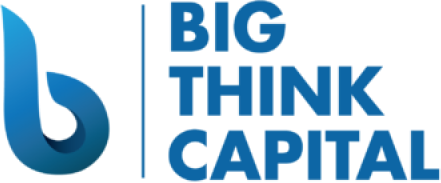The Impact of Federal Interest Rate Decisions on Working Capital Loans: Strategies for Small Businesses
Estimated Reading Time: 6 minutes
- Understanding how federal interest rates impact small business financing.
- Strategies to manage cash flow amid rising rates.
- Exploring alternative financing options to minimize costs.
- The importance of locking in lower rates when possible.
- Identifying key resources for staying informed on interest rates.
- Understanding the Federal Reserve’s Role in Interest Rates
- Current Interest Rate Trends
- The Connection Between Interest Rates and Working Capital Loans
- Strategies for Small Businesses Navigating Interest Rate Changes
- The Importance of a Financial Partner
- Staying Well-Informed
- Conclusion
- FAQ
Understanding the Federal Reserve’s Role in Interest Rates
The Federal Reserve, or the Fed, is the central bank of the United States. Its primary responsibilities include managing inflation and stabilizing the U.S. economy. One of the most powerful tools at its disposal is the manipulation of interest rates. When the Fed lowers interest rates, borrowing becomes more affordable, stimulating investment and spending. Conversely, raising rates often aims to curb inflation by making loans more expensive.
Current Interest Rate Trends
As of 2025, the Federal Reserve has been faced with the complex challenge of balancing inflationary pressures and economic growth. In response to rising consumer prices, the Fed has been incrementally increasing interest rates. According to the Federal Reserve Bank of St. Louis, the federal funds rate climbed to 5.25% in early 2025, impacting various credit products, including working capital loans.
The increase in the federal funds rate directly affects the prime rate, which is the benchmark used by lenders when determining interest rates on loans. Typically, small businesses seeking working capital loans, whether through a traditional bank or an alternative lender, will see higher rates aligned with these changes.
The Connection Between Interest Rates and Working Capital Loans
When interest rates rise, the cost of borrowing increases. This is particularly crucial for small businesses considering working capital loans, which are often used for:
- Managing daily operational costs
- Investing in inventory
- Hiring new staff
- Expanding marketing efforts
Direct Effects of Interest Rate Increases on Small Business Borrowing
- Higher Monthly Payments: As loan rates climb, businesses face larger monthly payments, which can strain cash flow and impact operational efficiency.
- Reduced Loan Amount Eligibility: Lenders may tighten their underwriting standards, making it harder for small businesses to qualify for loans at higher interest rates.
- Changes in Loan Structures: Businesses may need to consider alternative financing options, such as SBA loans or lines of credit, to mitigate costs.
Understanding these implications allows small business owners to prepare and strategize effectively.
Strategies for Small Businesses Navigating Interest Rate Changes
While rising interest rates present significant challenges, small businesses can adopt strategic approaches to mitigate these impacts. Here are three practical takeaways to consider:
1. Optimize Cash Flow Management
Improving cash flow management can make your business more resilient to rising interest rates. Consider implementing the following practices:
- Regular Financial Assessments: Conduct monthly reviews of your cash flow statements, profit margins, and top expenses. This transparency can highlight areas for potential savings.
- Negotiate Supplier Terms: Strengthen relationships with suppliers to negotiate better payment terms, allowing you to maintain flexibility in cash outflow.
- Embrace Invoice Financing: If applicable, utilize invoice financing to unlock capital tied up in outstanding invoices. This can improve liquidity without incurring high-interest debt.
2. Explore Alternative Financing Options
In response to rising rates, many small businesses benefit from exploring various financing products. Here are options worth considering:
- SBA Loans: Often regarded for competitive rates and favorable terms, Small Business Administration loans can provide more affordable financing options for long-term projects, even in a high-rate environment.
- Equipment Financing: If your business depends on specific equipment for operations, consider financing that is secured by the equipment itself, typically offering lower rates than unsecured loans.
- Merchant Cash Advances: For businesses with fluctuating revenue, merchant cash advances offer quick access to funds based on daily credit card sales, often bypassing traditional credit score assessments.
3. Lock in Lower Rates When Possible
If interest rates are expected to rise further, it may be prudent to secure a loan sooner rather than later. Here are strategies to lock in better rates:
- Short-Term Loans: Consider short-term loans that typically offer lower interest rates and can be paid back quickly, thus minimizing the impact of any future rate increases.
- Credit Lines: Establish a line of credit with your lender, allowing you to draw funds when necessary while locking in your rate ahead of time.
- Refinancing Opportunities: If you already have existing loans, evaluate your current rates and compare them with market offerings. Refinancing your loans now could potentially save you money in the long run.
The Importance of a Financial Partner
Navigating the complexities of interest rate fluctuations can be overwhelming for small business owners. It’s essential to have a financial partner that understands these challenges. At Big Think Capital, we specialize in helping small businesses explore diverse funding options, whether you are seeking a working capital advance, an SBA loan, or equipment financing. Our expert team is committed to finding the best solutions tailored to your financial needs.
Staying Well-Informed
In today’s rapidly changing economy, remaining educated about macroeconomic trends, such as federal interest rate decisions, is vital for business success. Regularly following reputable financial news sources can help business owners stay ahead of potential impacts on their funding options.
Key Resources for Small Business Owners
- Federal Reserve Economic Data (FRED): An excellent source for tracking changes in federal interest rates and their historical context. Visit FRED for continuous updates.
- SBA.gov: The U.S. Small Business Administration provides valuable insights into loan programs and financial assistance.
- Big Think Capital Blog: For ongoing advice on funding strategies, make sure to check the blog regularly for the latest insights and updates.
Conclusion
With rising federal interest rates affecting the landscape of small business financing, it is crucial for business owners to understand how these changes will impact working capital loans. By optimizing cash flow management, exploring alternative financing options, and locking in lower rates when possible, small businesses can navigate this challenging environment more effectively.
If you would like to learn more about your financing options or speak with one of our funding experts, visit us at bigthinkcapital.com. Taking pro-active steps now can ensure that your business remains agile and prepared for future challenges in the lending landscape.
FAQ
Q: How can I prepare for rising interest rates?
A: Improve cash flow management, explore alternative financing options, and consider locking in rates with financial products that suit your needs.
Q: What types of loans can I consider during high interest rates?
A: Look into SBA loans, equipment financing, and merchant cash advances as potential alternatives.
Q: Why is having a financial partner important?
A: A financial partner can provide guidance and support as you navigate the complexities of interest rates and financing options tailored to your business.






